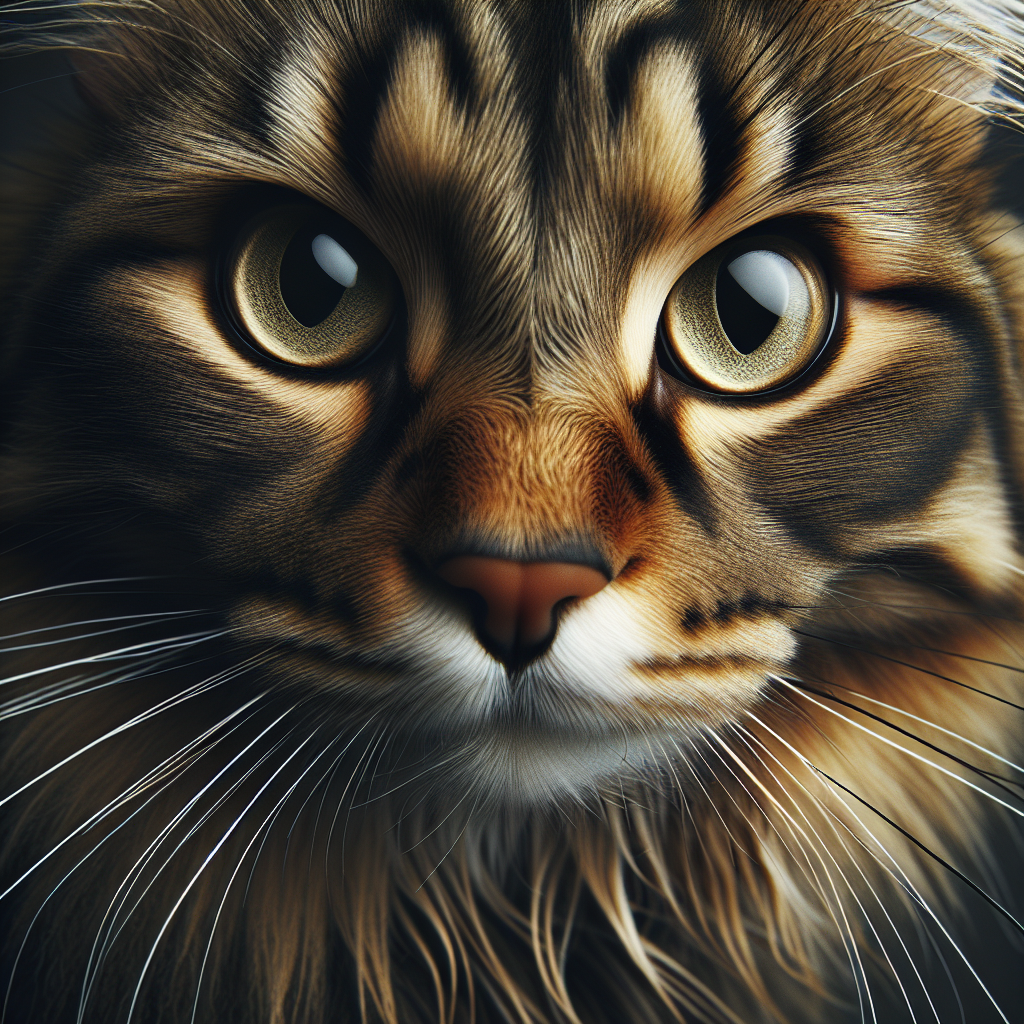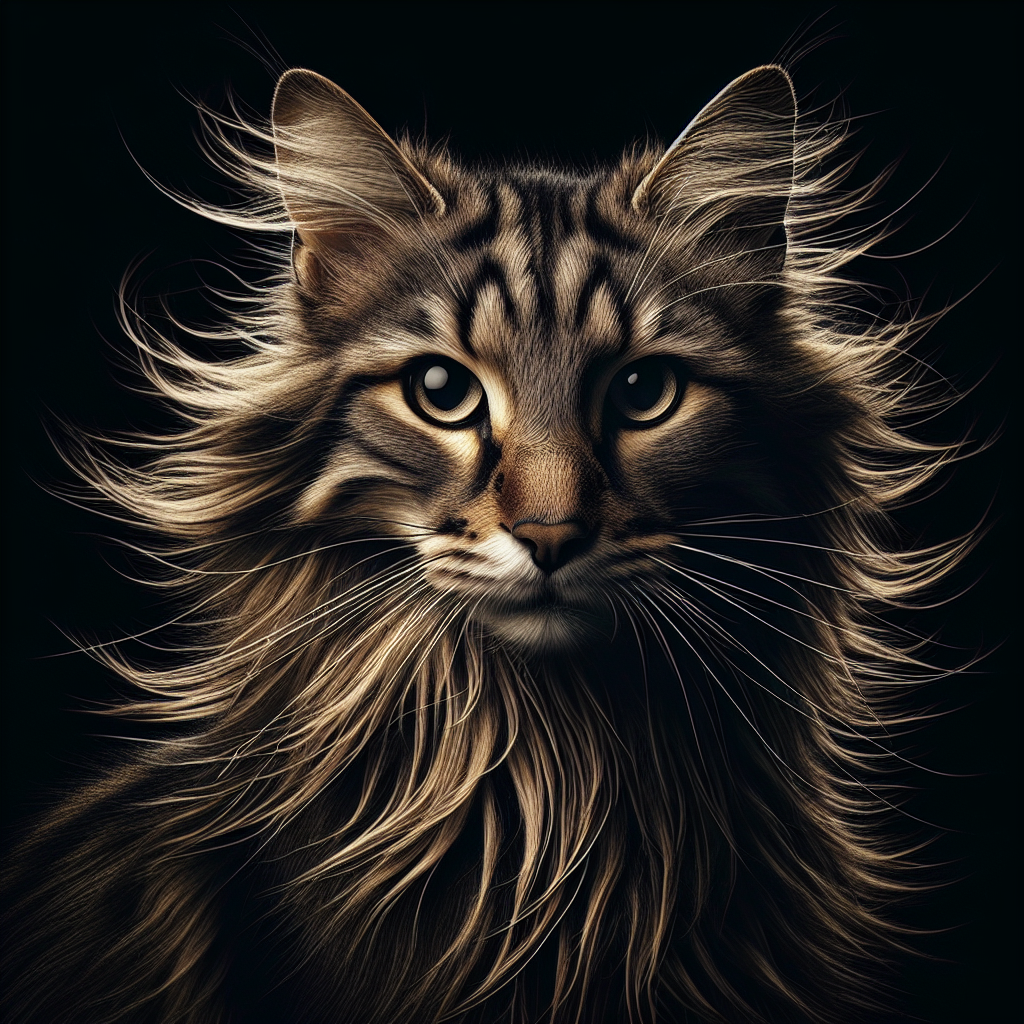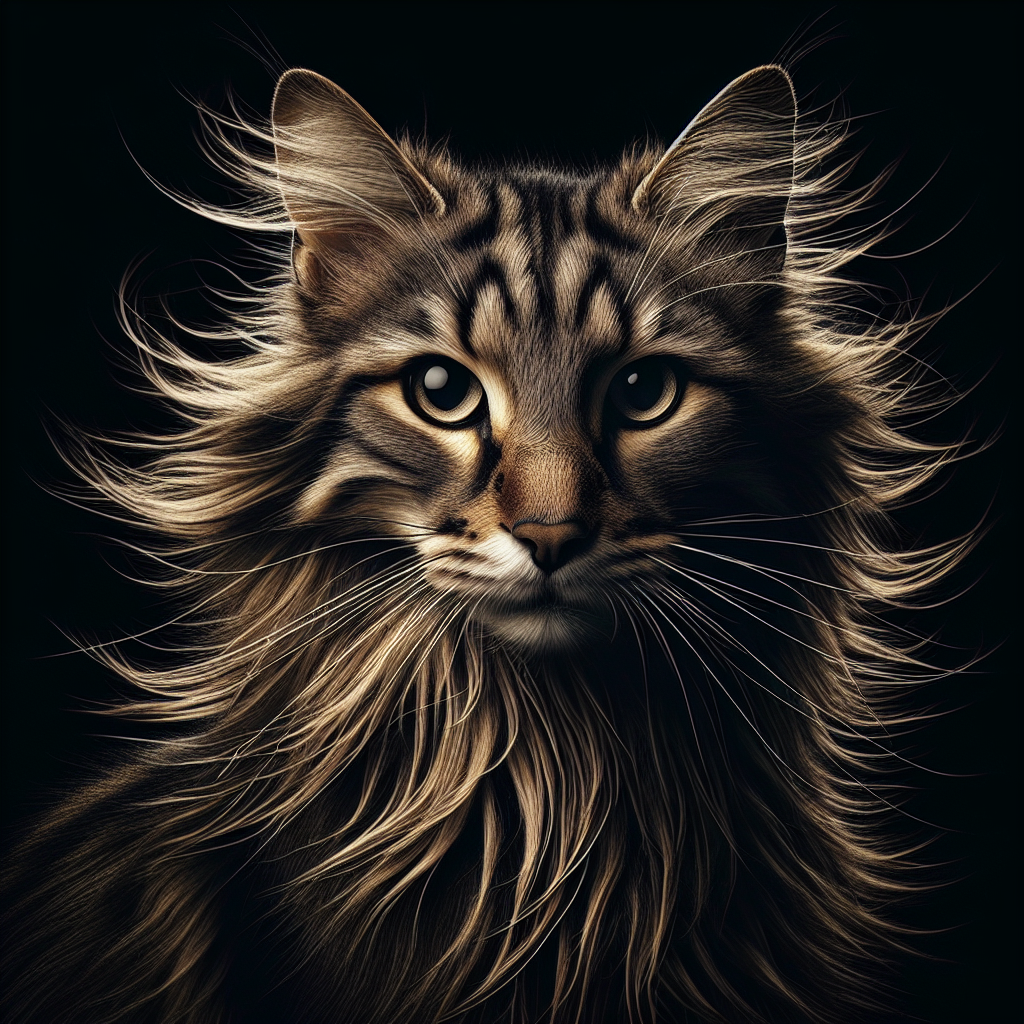If you’re a cat owner or considering getting a feline companion, you may have wondered if there are any significant behavioral differences between short-haired tabby cats and their long-haired counterparts, particularly when it comes to male cats. This article seeks to explore the question of whether male short-haired tabby cats exhibit wilder behavior compared to their long-haired counterparts. So, grab a cozy spot, and let’s find out if your tabby’s fur length has any bearing on their temperament.

Physical Characteristics
Coat Length
The physical appearance of cats is often a topic of fascination and discussion among cat lovers. One aspect that often stands out is the length of the cat’s coat. When it comes to tabby cats, both short-haired and long-haired varieties exist. Short-haired tabby cats have a sleek and smooth coat, which is relatively low-maintenance in terms of grooming. On the other hand, long-haired tabby cats have a luxurious and fluffy coat that requires regular brushing to prevent matting and tangling. Beyond their coat lengths, both types of tabby cats share similar physical characteristics, such as their distinctive tabby patterns.
Tabby Patterns
Tabby cats are known for their unique coat patterns, which are highly cherished by cat enthusiasts. These patterns include classic, mackerel, spotted, and ticked. Classic tabby cats have bold swirling patterns on their bodies, often resembling a bull’s-eye or the letter “M” on their foreheads. Mackerel tabby cats, also referred to as striped tabbies, have narrow, vertical lines that run along their bodies, resembling fishbones. Spotted tabby cats, as the name suggests, have spots or blotches on their coat that are evenly distributed. Ticked tabby cats have individual hairs with alternating bands of color, giving them a salt-and-pepper appearance. It’s essential to note that these tabby patterns can be found in both short-haired and long-haired cats, without any discernible difference in behavior based solely on their coat patterns.
Behavioral Traits
Activity Level
When it comes to the behavior of tabby cats, their activity level is an important consideration. Both short-haired and long-haired tabby cats are known for being quite active and energetic. They have a natural inclination to explore their surroundings, chase toys, and engage in playful activities. This high activity level is a trait commonly associated with tabby cats in general, regardless of their coat length.
Playfulness
Tabby cats, regardless of whether they have short hair or long hair, are known for their playful nature. They often have a curious and mischievous streak, which can provide endless entertainment for their human companions. From pouncing on feather toys to chasing laser pointers, they always find ways to unleash their playful instincts. It’s important to provide them with plenty of toys, playtime, and mental stimulation to keep them happy and engaged.
Territorial Behavior
Tabby cats, like other feline counterparts, can exhibit territorial behavior to varying degrees. This behavior is not dependent on their coat length but rather their individual personalities and experiences. Some tabby cats may be more territorial than others, defining certain areas of the home as their own. This behavior is a natural instinct and can manifest in behaviors such as marking with scent or being protective of their personal space. It is crucial to provide them with ample opportunities to feel secure and respected within their territory.
Affectionate Nature
Tabby cats, whether short-haired or long-haired, are often known for their affectionate nature. They can form strong bonds with their human companions and enjoy being petted and cuddled. However, it’s important to remember that cats, like individuals of any species, have unique personalities. While some tabby cats may be more openly affectionate, others may prefer their personal space and show their love in more subtle ways. Respect for their preferences and understanding their individual needs is key to fostering a strong bond with your tabby companion.
Influence of Genetics
Inheritance of Traits
Tabby patterns, coat length, and various behavioral traits can be influenced by genetics. These traits are believed to be inherited from the cat’s parents and ancestors. The specific combinations of genes will determine the coat pattern and coat length of a tabby cat. For example, the presence of the “tabby” gene is essential for the cat to exhibit tabby patterns, whereas coat length is influenced by different genes. It’s worth noting that genetics play a significant role in a variety of traits, but they do not determine a cat’s behavior solely. Environmental factors and individual experiences also shape a cat’s personality and behavior.
Role of Genes in Behavior
While genetics can influence certain behavioral tendencies, such as a predisposition towards high activity levels or territorial behavior, it’s important to remember that individual experiences and socialization also play a significant role. Genetics can provide a framework, but a cat’s behavior is ultimately shaped by a combination of genetic predisposition and environmental factors. Therefore, it would be incorrect to assume that male short-haired tabby cats are inherently wilder compared to long-haired cats based solely on their genes. In reality, the behavior of a tabby cat is the result of a complex interplay between genetics and environment.
Environmental Factors
Upbringing and Socialization
Environmental factors, including a cat’s upbringing and socialization, have a significant impact on their behavior. The way a cat is raised and exposed to different people, animals, and environments during their early developmental stages will shape their attitudes and reactions later in life. With proper socialization, tabby cats, regardless of their coat length, can grow up to be well-adjusted and friendly companions. Ensuring positive experiences and interactions is crucial to nurturing a well-rounded and socially adept tabby cat.
Living Conditions
The living conditions in which a tabby cat resides can also influence their behavior. Providing a stimulating environment with ample opportunities for exercise and play can help alleviate excess energy and prevent boredom-related behavior issues. Creating a safe and secure space within the home, complete with scratching posts, elevated perches, and hiding spots, can promote a sense of comfort and reduce stress. Adequate access to food, water, and litter boxes is also essential for their overall well-being. By creating a positive living environment, both short-haired and long-haired tabby cats can thrive and exhibit balanced behavior.

Interacting with Other Cats
Hierarchy and Dominance
When it comes to interacting with other cats, tabby cats, like any other feline, have their unique dynamics. Hierarchy and dominance play a role in how cats interact with one another. This behavior is not dependent on their coat length but rather on a combination of individual personalities and the specific cats involved. Some tabby cats may assert themselves as dominant, while others may be more submissive. It’s essential to respect their social hierarchy and provide them with the space and time to establish and navigate their relationships with other cats in a safe and controlled manner.
Play Behavior
Play behavior is a crucial aspect of a cat’s social interactions, regardless of their coat length. Tabby cats, irrespective of whether they have short hair or long hair, engage in playful interactions with other cats. This play can involve chasing, pouncing, and wrestling with their feline counterparts. Play allows cats to exercise their instincts, build social bonds, and establish boundaries. Supervised and monitored play sessions can help tabby cats develop and maintain healthy relationships with other cats in the household.
Interaction with Humans
Adaptability
Tabby cats, regardless of their coat length, exhibit a fair degree of adaptability when it comes to interacting with humans. They are known for being able to adjust well to changes in their environment or daily routines. Whether it’s a new family member, a change in living arrangements, or a different feeding schedule, tabby cats are typically quick to adapt. However, individual cats may have varying levels of adaptability, and some may be more sensitive to changes than others. Patience, understanding, and providing a stable environment are essential in fostering a positive relationship with your tabby companion.
Trainability
When it comes to training, tabby cats can be quite receptive, regardless of their coat length. With patience, positive reinforcement, and the use of reward-based training techniques, they can learn a variety of commands and behaviors. From basic obedience commands to tricks and agility exercises, tabby cats can surprise you with their intelligence and willingness to participate in training sessions. However, it’s important to remember that cats have their own unique personalities, and not all cats may be as trainable as others. Respect for their individuality and preferences is key to successful training sessions.
Health Considerations
Grooming Needs
Grooming needs can vary between short-haired and long-haired tabby cats. Short-haired tabby cats generally require minimal grooming compared to their long-haired counterparts. Their sleek coat may only require occasional brushing to remove loose hair and maintain its shine. On the other hand, long-haired tabby cats have more demanding grooming needs. Their luxurious coats are prone to matting and tangling, requiring regular brushing. In some cases, professional grooming might be necessary to prevent coat-related issues. It’s important to establish a grooming routine early on and provide the necessary care to keep your tabby cat’s coat healthy and beautiful.
Allergies
While tabby cats, regardless of their coat length, do not possess any specific allergenic qualities, certain individuals may still experience allergies to cats. Cat allergies are generally triggered by the proteins found in a cat’s dander, saliva, and urine. However, the length of a cat’s coat, whether short or long, does not inherently affect the allergy-inducing proteins. It’s advisable for individuals with known cat allergies to spend time with the specific tabby cat they are interested in adopting or interacting with to determine if they have any allergic reactions before making a commitment.
Genetic Health Conditions
Like all cats, tabby cats can be prone to certain genetic health conditions. However, it’s important to note that these conditions are not exclusive to tabby cats or dependent on their coat length. Specific genetic health conditions, such as hypertrophic cardiomyopathy (HCM) or polycystic kidney disease (PKD), can occur in cats of any breed or coat length. Responsible breeding practices, regular veterinary care, and genetic testing can help mitigate the risk of these health conditions. By providing proper healthcare, nutrition, and a nurturing environment, you can optimize your tabby cat’s overall health and well-being.
Myths and Misconceptions
Pop Culture Representations
Tabby cats, particularly the iconic orange or ginger tabbies, have often been depicted in popular culture as mischievous, adventurous, and energetic. While tabby cats do possess unique traits and personalities, it is essential to remember that their behavior cannot be generalized solely based on their coat patterns or colors. Every cat, including tabby cats, has their individual tendencies and preferences that are shaped by a combination of genetics and environment.
Bias and Stereotypes
Just like other cats, tabby cats can fall victim to biases and stereotypes. Certain assumptions, such as male short-haired tabby cats being wilder compared to long-haired cats, are not based on scientific evidence but rather on anecdotal generalizations. These stereotypes can perpetuate myths and mislead prospective cat owners. It is crucial to approach each cat as an individual and not make assumptions based on their coat length or gender. By treating every tabby cat with love, care, and respect, regardless of their physical characteristics, we can debunk stereotypes and foster a better understanding of these wonderful feline companions.
Conclusion
Tabby cats, whether short-haired or long-haired, possess a unique blend of physical characteristics and behavioral traits. While their coat length may differ, their behavior is influenced by a combination of genetics and environmental factors. Understanding and appreciating individual differences is key to forming a strong bond with your tabby companion. Regardless of whether your tabby cat is deemed wild or laid-back, short-haired or long-haired, they all share a common desire for love, care, and a safe place to call home. Remember, every tabby cat is an individual deserving of respect and understanding, and by embracing their unique qualities, you can enjoy a fulfilling and joyous companionship with your tabby friend.

